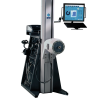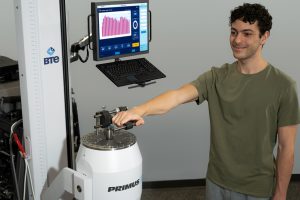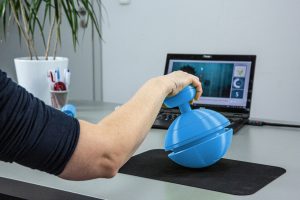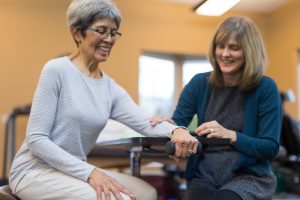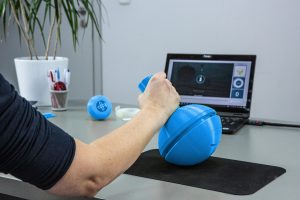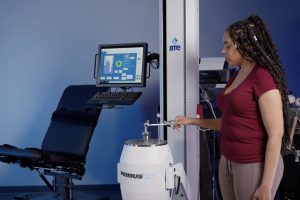
The Ultimate Guide to Pinch Strength Exercises
BTE System GuidesPinch strength plays a crucial role in daily tasks, from self-care to sports, yet it often goes unnoticed until weakness sets in. This article explores the importance of pinch strength, effective exercises to improve it, and advanced rehabilitation tools like the PrimusRS that enhance therapy outcomes.
Pinch strength is a quality that’s often overlooked until it’s no longer sufficient to accomplish daily tasks. As an occupational therapist I’ve seen a plethora of pinch and grasp deficiencies that amount to significant frustration, loss of independence, and lesser quality of life overall.
Pinch strength allows us to feed ourselves (using utensils or not), dress ourselves, grasp small items, access intricate aspects of our environment, succeed in athletic endeavors, and generally operate comfortably in our society1. As rehab therapists, we know how limiting it is for a patient to have a weak pinch and struggle with daily tasks.
Numerous pinch exercises focus on the particular muscle groups of the thenar and hypothenar, as well as other hand structures. The following information will serve as a comprehensive guide to effective pinch exercises that build strength and improve dexterity.
Unlock the Power of Your Grip: What Is Pinch Strength?
Intrinsic hand muscles primarily govern pinch strength, but pinches that generate significant force are assisted by extrinsic muscles2. Depending on the pinch pattern itself, the muscles involved can vary. Pinch patterns vary from activity to activity based on the desired outcome. For example:
- Palmar pinch (three jaw chuck): adductor pollicis, first dorsal interosseous, flexor pollicis brevis2
- Lateral pinch (key pinch): adductor pollicis, flexor pollicis longus and brevis, abductor pollicis longus and brevis4
- Tip to tip pinch (first and second digits): flexor policis longus, flexor digitorum superficialis and profundus3
Regardless of which pinch pattern is used, it’s undeniable that fine motor skills help us navigate our world fluidly. The fine motor skills in pinching directly affect self-care tasks such as dressing, showering, brushing our teeth, and hygiene tasks. It also allows us to cook meals, open packages, manage zippers and locks, cut with scissors or a knife, and more. Everyday tasks like self-feeding are often the first priority for patients and therapists discussing goals for occupational therapy plans of care.
Combining both fine motor skills and gross motor skills allows us to perform more complex tasks.
Sports, for example, can have varying degrees of each. Football requires grip strength with a secondary pinch assist, while competitive archery and competitive sharp shooting require more pinch-based patterns. Baseball is a solid example of both pinch and grasp patterns working simultaneously, as certain types of pitches require a specific finger pattern and lines of force from the fingers to be successful5.
How Grip Strength Supercharges Pinch Power
Grip strength is essential for enhancing pinch power because it integrates extrinsic and intrinsic muscles in the wrist and hands. All major extensors and flexors that govern wrist flexion and extension are also part of typical grasp and pinch patterns. Intrinsic muscles in the palms provide complete flexion of the digits from metacarpal to distal phalange and additional stabilizing force.
For those without significant restrictions to hand use, stronger, more capable hands mean exercising our neural pathways more completely and accessing the environment more effectively. Even aging patients can benefit from grip strength assessments and exercises. Grip strength acts as a biomarker for global function, and grip strength exercises are a fantastic tool to maintain function, improve quality of life, and even reduce fall risk.
Effective Pinch Strength Exercises and Tools for Rehab
I love incorporating pinch exercises into my therapeutic plans. I strive for a level of creativity and personalization to make exercises effective and interesting. Depending on where a patient is starting on their rehabilitation journey, I typically start with therapy putty exercises. Therapy putty is a common, basic tool for pinch strengthening. I typically use it as a preparatory activity before moving on to more advanced exercises.
Other activities I’ve used in practice include using a washer, nut, and bolt board, which is popular with my patients who enjoy tinkering and mechanical tasks. This activity works more on endurance and dexterity than straight force (something to remember for your plans). Some other hand therapy tools that I’ve found successful and enjoyable for patients recovering from hand injuries include:
- Playing “piano” with either a real keyboard or a makeshift one.
- A hand exercise web with any combination of tasks.
- Hand exerciser with individually articulating keys with resistance.
- Graded resistance clothespins
- Any kind of AI, VR, or augmented reality tool
Technology has aided in developing more accurate assessment tools and training tools, from pinch exercises to work hardening rehabilitation. BTE Technologies offers the PrimusRS system, which is wonderful for patients working on pinch and grip exercises and beyond. Therapists can assess, train, and track all in one machine. It allows patients to see their progress in a clear and quantifiable way, and it benefits whole clinics as this system is designed for whole-body rehabilitation.
The Simulator II is an additional piece of technology that I love as an occupational therapist. Thanks to its various attachments, it allows a patient to practice everyday tasks and isolated motions as part of a functional training regimen. Performance is logged and reflected in trackable progress, which helps each patient know exactly where they stand on the course of their therapy goals.
Lateral Pinch Strength Exercises

A lateral pinch pattern, or key pinch pattern, forms when the thumb opposes the lateral side of the second digit. Digits 3-5 can either aid in stabilizing and adding force or be flexed out of the way, depending on the task being completed. This pinch is used in tasks like:
- Managing a key into a lock
- Holding eating utensils
- Managing clothing, such as pulling the front of pants or a shirt together to button
- Inserting a credit card into a machine
- Opening bags such as chips or resealable bags
- Peeling items to open them, such as a yogurt container
Exercises that help with strengthening the lateral pinch often correlate with a functional task. You can also use a more general tool with specific instructions for the patient to use a certain pinch pattern. I’ve done this using clothespins, cards, and more.
Palmar Pinch Strength Exercises
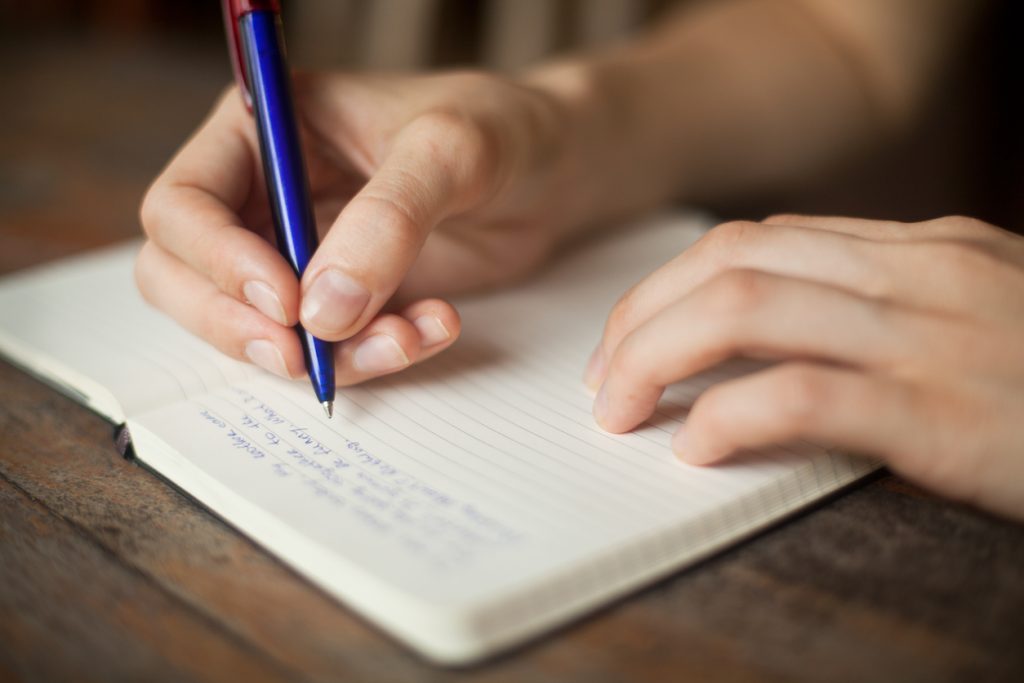
The Palmar pinch or three-jaw chuck pinch pattern is when the thumb opposes the volar side of the second and third digits. This is one of childhood development’s most important pinch patterns and the most functional in daily life. This pinch is functional in these kinds of activities:
- Holding a writing or eating utensil
- Managing buttons or snaps
- Picking up items
- Turning round doorknobs
- Using toilet paper after using the restroom
- Tying shoelaces
- Using makeup brushes
The palmar pinch pattern is one of my favorite to incorporate into exercises because of its functionality. I’ve used weighted bean bags or weighted stuffed animals, therapy putty, elastic exercisers, and small handballs.
Tip to Tip Pinch Strength Exercises
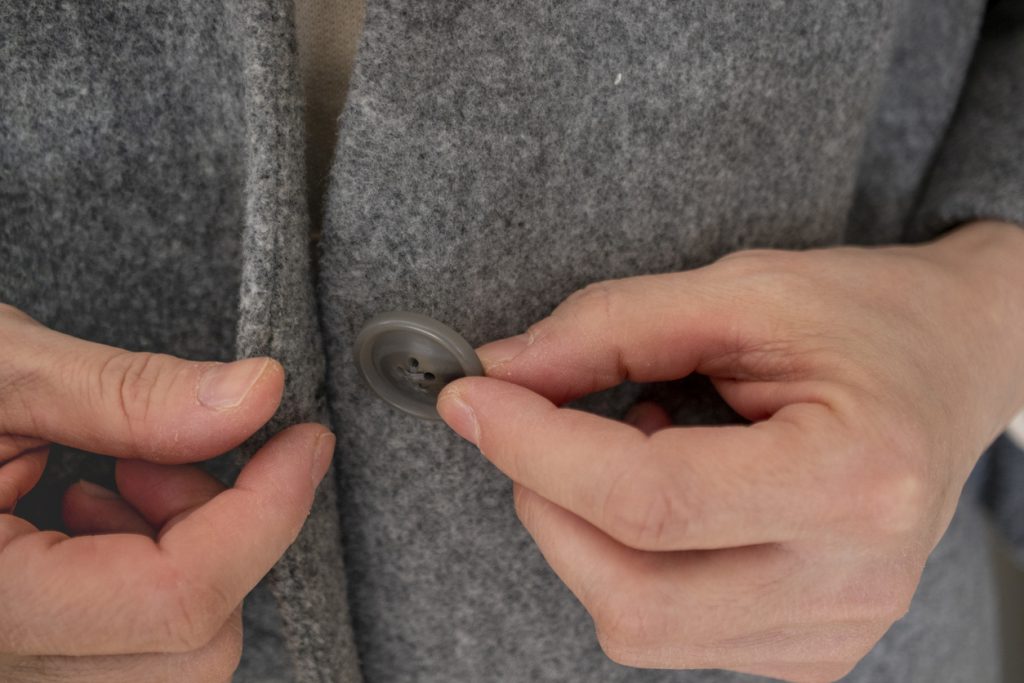
Tip to tip pinch, or pincer grasp, is when the thumb opposes the second digit at the tip of the finger. This is the finest of fine motor patterns and one of the more difficult to rehabilitate, especially after neurological injury. This pinch pattern is useful for:
- Managing buttons and zippers
- Picking up very small items
- Putting on jewelry
- Managing coins (especially off of the floor or a table)
- Opening certain containers
- Managing wires, threads, strings, etc.
Therapy putty is a common tool for strengthening a pincer grasp, but managing very small or low-friction items like beads, beans, and even grains of rice works, too. The strengthening benefit lies in the sustained opposition of the digits to keep the small item within grasp.
How To Improve Pinch Strength on PrimusRS: Advanced, Evidence-Based Clinical Technology
One of the most common hand therapy exercises is pinch strength exercises. With the PrimusRS pinch strength tool, you can do three pinch exercises: the lateral pinch, palmar pinch, and tip-to-tip pinch. All while collecting data and generating visual feedback and reports to keep your patient motivated. Watch the video below to learn how to increase pinch and grip strength on the PrimuRS:
Quickly switch between each pinch exercise by directing the patient to change their hand position. Just like any exercise on the PrimusRS, the pinch exercises can be personalized for each patient with variables such as:
- Resistance mode
- Resistance weight
- Pinch width
- Positioning of the height or angle
Exercising with the PrimusRS exceeds what can be accomplished with therapy putty and analog tools, allowing you to objectively assess and improve your patient’s pinch strength from session to session.
Maximize Rehabilitation Outcomes with Pinch Strength Training
Pinch strength is more than meets the eye regarding a patient’s global functioning. Adequate pinch and grip strength to complete daily tasks is also how we keep our autonomy and independence. Incorporating pinch exercises into a treatment plan contributes to a better quality of life and longevity for our older adults. Remember to keep exercises fun, functional, and translatable to ensure the best therapeutic outcomes.
BTE has rehabilitation products for every therapist. They combine technology with clinical knowledge to create user-friendly, novel, engaging, and holistically effective tools. Check out more TherapySpark articles to find treatment and practice management inspiration, or browse through their functional rehab products to see what your next clinic upgrade could be.
Mary Vieregge, OTR/L is an Occupational Therapist and freelance writer based in Eastern North Carolina. She has experience in a range of settings, from inpatient rehabilitation to long-term care, with a concentration in neurorehabilitation and spinal cord injury populations. Mary is passionate about patient education and innovative practices, is constantly searching for the latest and greatest to add to her clinical toolbox.


